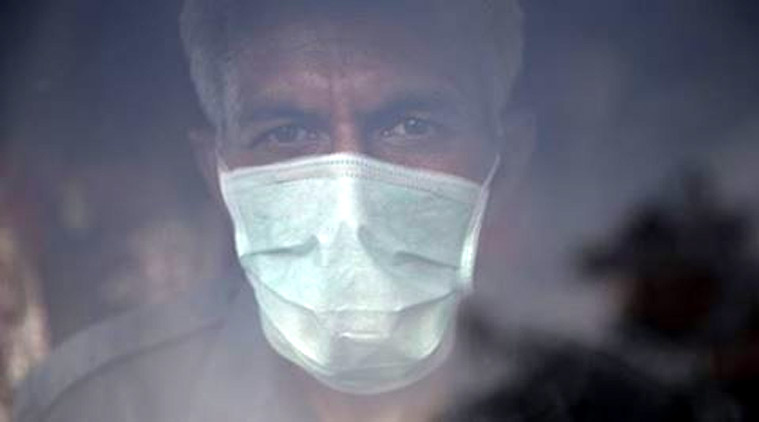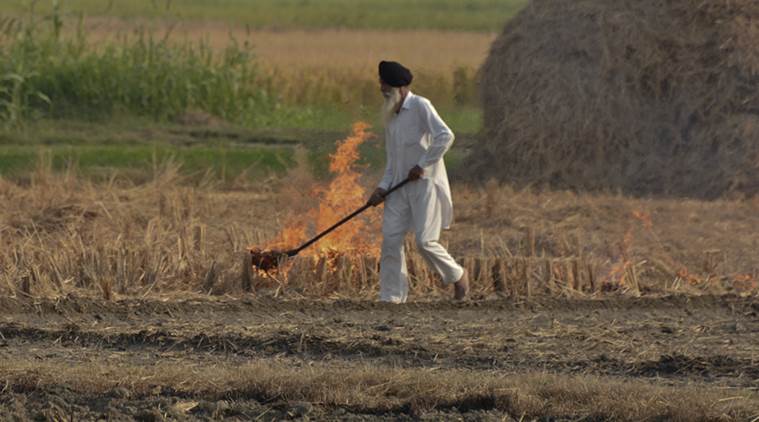- India
- International
Delhi continues to grapple with ‘very poor’ air quality, CPCB suggests stringent measures
Amid grim situation, the CPCB has suggested several stringent measures which include the closure of all construction activities that generate dust pollution between November 1 and 10.
 The Central Pollution Control Board (CPCB) recorded the overall Air Quality Index (AQI) of Delhi at 350, just 11 points below the highest AQI of this season recorded on Friday. (File photo)
The Central Pollution Control Board (CPCB) recorded the overall Air Quality Index (AQI) of Delhi at 350, just 11 points below the highest AQI of this season recorded on Friday. (File photo)
Air quality in Delhi continued to worsen on Saturday with eight areas of the national capital recording severe pollution levels, as authorities warned of conditions deteriorating in the coming weeks, owing to Diwali celebrations and stubble burning in adjoining regions. The eight areas that recorded ‘severe’ air quality Saturday are Anand Vihar, Dwarka Sector 8, Narela, Punjabi Bagh, Bawana, Mundaka, Vivek Vihar and Rohini.
According to PTI, Siddharth Singh, a representative from the India Meteorological Department, said Delhi’s air quality, which has deteriorated to the very poor level, would continue to remain in that category for a few days. The task force said that at the beginning of November the situation may further deteriorate on account of localised emissions during festivals and the regional contribution due to stubble burning.
The Central Pollution Control Board (CPCB) recorded the overall Air Quality Index (AQI) of Delhi at 350, just 11 points below the highest AQI of this season recorded on Friday, PTI reported. While Delhi’s air quality remained ‘very poor’ for the fourth day in a row, similar condition prevailed in Ghaziabad, Gurgaon, Faridabad, Noida and Greater Noida.
Amid grim situation, the CPCB has suggested several stringent measures which include the closure of all construction activities that generate dust pollution between November 1 and 10. It is to be noted that dust particle emanating from construction sites adds to an aggravating poor air quality. Other measures include shutting down of coal and biomass-based industries (excluding thermal and waste-to-energy plants) from November 4 to 10, intensification of efforts by transport department to check polluting vehicles and controlling traffic congestion in Delhi-NCR between November 1 and 10, according to the minutes of the meeting.
 A farmer burns crop stubble after harvesting paddy on the outskirts of Amritsar, Punjab. (AP Photo)
A farmer burns crop stubble after harvesting paddy on the outskirts of Amritsar, Punjab. (AP Photo)
The task force also recommended efforts to provide uninterrupted power supply in NCR areas to avoid the requirement of operating diesel generator (DG) sets. The PM2.5 (presence of particles in the air with a diameter of less than 2.5 micrometres) was recorded at 179. The PM2.5, also called “fine particulates,” can be a matter of more serious health concern than PM10. The PM10 level (presence of particles in the air with a diameter of less than 10 micrometres) in Delhi stood at 321, according to the data from the SAFAR.

The SAFAR also issued a health advisory due to increased pollution level in Delhi, urging people with heart or lung disease, older adults and children to avoid prolonged or heavy exertion. It also recommended people to go for shorter walks instead of jogs, keeping windows closed and wearing masks while stepping outside. An AQI between 0 and 50 is considered ‘good’, 51 and 100 ‘satisfactory’, 101 and 200 ‘moderate’, 201 and 300 ‘poor’, 301 and 400 ‘very poor’, and 401 and 500 ‘severe’.
Apr 19: Latest News
- 01
- 02
- 03
- 04
- 05





























